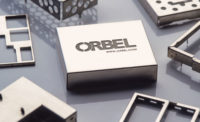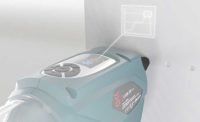Fastening: Going With the Flow

Automakers are often the driving force behind the latest product and process innovations in assembly. Case in point: European automakers have been using flow drilling screws since 1996 to assemble body panels and chassis made of aluminum and thin materials-which continue to gain favor to make cars lighter.
Aware of this trend, several U.S. auto and truck makers have begun assembling body panels with flow drilling screws on a trial basis. Production installation of the screws in American automobiles could begin later this year.
Manufacturers prefer using these screws for panel assembly for several reasons. They can be installed with or without a punched or drilled hole, and they are often easier to install and more economical than spot welding. Flow drilling screws allow for one-sided assembly without a C-frame and require no counter nut. Finally, installation can be automated through a fixtured or robot-assisted screwdriving system for high throughput.

Flow drilling screw installation is a six-step process: heating, penetrating, through draft forming, thread forming, engagement of full threads and final tightening. Graphic courtesy Weber Screwdriving Systems
The Fastener
As its name implies, the fastener is based on flow drilling, a process for producing threaded or unthreaded holes in metal parts. This decades-old process involves drilling a steel tool through a metal surface at relatively high axial pressure and rotational speed to create a hole or bushing without removing any metal.The tool has a cyndrilical top, conical middle section and conical bottom with a sharp tip. As the spinning tip comes into contact with the material, heat is generated, making the material soft and malleable enough to be formed and perforated. The tool pushes through the material, leaving a thin collar of displaced material around the upper surface and a bushing of material in the lower surface. This process usually takes just a few seconds.
Building on this technology, German fastener manufacturers have developed flow drilling screws, which are self-piercing and extruding fasteners that simultaneously drill through and join two to four sheets of thin metal. Available fasteners include FDS by EJOT GmbH & Co., Pentaflow by Schrauben Betzer GmbH & Co. and Flowform by Arnold Umformtechnik GmbH & Co.
The screws are case hardened or through hardened, and, in some cases, tempered to provide high-tensile strength. They come with various heads-hexagonal, Phillips, male Torx, female Torx, and Torx plus-and can be easily removed and reused. However, the screws have some key design differences.
EJOT makes three FDS screws, two of which are designed for applications without a hole. The standard and BS versions feature a recess area under the head so some extruded material can collect there during the forming of the through-draft.
As the hole is formed, this material is formed into a thin lip around the top of the threaded hole. Most of the extruded material goes to backside of the bottom sheet, where it helps thread engagement and basically serves as the counter nut.
The standard screw can generate a draft up to three times the thickness of the original surface.
The standard and BS screws have unthreaded, conical tips that can flow through steel, aluminum and magnesium. The standard screw has a sharp tip that is best-suited for automated assembly. The BS screw has a fluted tip, making it suitable for both manual and automated assembly of high-tensile materials. However, the BS screw does create some debris during initial drilling.
A third version, the PKS, features an unthreaded flat conical tip that can also pierce stainless steel. This screw has no recess area and is usually used for manual assembly of parts with punched or drilled holes. However, EJOT can optimize the screw’s head geometry to accommodate extruded material so the PKS can be used for assemblies without a hole.
Pentaflow screws come in two series, Form C and Form F, both of which are fully threaded. Form C fasteners have a conical point tip with thread flanks that form the rim of the threaded hole. In contrast, Form F screws feature a truncated cone tip that won’t damage sensitive components, such as cables, located below the bottom metal sheet.
Flowform is a trilobular screw with an unthreaded, sharp conical tip. Trilobular screw threads have a triangular cross-section rather than a circular one. This design increases holding strength while reducing material displacement. It also creates a larger difference between the thread-forming and tightening torque.

This cutaway view shows an FDS screw that has joined together two layers of aluminum sheet metal. The top layer is 4 millimeters thick, the bottom layer 3 millimeters. Photo courtesy EJOT USA.
Installation Process
In early applications, flow drilling screws were installed with a handheld electric screwdriver, but rarely are today because handheld tools don’t create enough spindle speed and torque. The preferred tool is the RSF20S automated screwdriving system, developed by Weber Schraubautomaten GmbH, the German parent of Weber Screwdriving Systems Inc. The tool can be fixtured or integrated with a heavy-duty, six-axis, serial-link robot. Automakers use the system both ways.During assembly, each flow drilling screw is blow-fed automatically through a receiving tube and into collet jaws. The jaws hold the screw momentarily until it is pushed down by a descending screwdriving spindle to begin installation.
Screw installation is a six-step process. In step one, the screw is applied with high thrust and spindle rotation to warm up the metal surface. Next, as localized heat increases, the screw begins to flow into the plasticized material. Step three is the forming of the through-draft on the reverse side of the material stack.
“At this point, the flow phase ends and the thread rolling phase begins,” says Rich Sarfoh, regional sales manager for EJOT USA. “Spindle rpm is lowered so the thread is formed in the hole without producing any material chips.”
In step five, spindle rpm and thrust are automatically lowered again. The screw begins to act like a standard fastener and is driven to a programmed torque. As the screw drives through all metals, there is full thread engagement. The screw is now completely seated and tightened to the correct torque. As the joined metals cool, they contract around the threads for added joint integrity.
Depending on metals being joined, cycle time with the RSF20S system is 1.5 to 5 seconds. Cycle time with a handheld tool is 4 to 8 seconds.

FDS screws come in standard, BS and PKS types. Shown is the standard type, which has a sharp tip that is best suited for automated assemblies. Photo courtesy EJOT USA
Automated System Capabilities
The RSF20S installs one FDS standard or PKS screw per cycle at a rotation speed up to 5,000 rpm. Typically the screw is an M5 or M6, 18 to 28 millimeters long. The RSF20S can produce an axial force up to 1.5 kilonewtons, thread-forming torque up to 8 newton-meters, and final seating torque up to 15 newton-meters. Spindles are available in standard, compact and Z-style configurations-the latter for use in offset-room applications.Thus far, the RSF20S has joined together two to four sheets of aluminum, magnesium, steel and stainless steel, with the thickest layers being in the middle and at the bottom. Maximum sheet metal depths are: aluminum, 6 millimeters; magnesium, 4.5 millimeters; steel, 2 millimeters; and stainless steel, 1.5 millimeters. The system uses an active-depth device to automatically obtain zero datum from the part surface. This allows the robot controller to quickly change depth monitoring.
The heart of the RSF20S is a Windows IP-based C50S controller, which is now in its second generation and available in standard or Soft PLC versions. The standard controller offers real-time screwdriving process curves, and performs statistical analysis and system diagnosis. Process and sequence control is possible with the Soft PLC version.
“Process and sequence control of the RSF and other peripheral equipment can be controlled through proprietary visualizations,” says Jim Graham, president of Weber Screwdriving Systems. “Fully traceable installation data and real-time fastening strategy changes are available for any assembly, from anywhere on the planet, 24 hours a day. With customer permissions and prior arrangements, Weber can also externally monitor and control their customers’ assembly strategies.”

The RSF20S system can be fixtured or integrated with heavy-duty, six-axis, serial-link robots. Photo courtesy Weber Screwdriving Systems
Automakers Embrace the Concept
Although patented in 1990, the FDS screw wasn’t used for auto assembly until 1996. That’s because power tools at the time lacked the speed and power needed to install the fastener.“Initially, only lower-rpm drills or screwdrivers were available for screw installation,” says Sarfoh. “Then Atlas Copco introduced a DC-powered, high-performance driver, which was capable of speeds greater than 2,000 rpm.”
In 1996, English automaker Lotus Cars began using this handheld tool with FDS screws to assemble the space frame for its Elise and Exige models. However, the Atlas Copco tool had limitations, especially in terms of cycle time and control.
By the end of the 1990s, Weber Schraubautomaten had developed its initial RSF20S screwdriving system for EJOT. Besides being automated, the system could install screws into thicker materials-specifically, steel greater than 1.2 millimeters and aluminum greater than 3 millimeters.
“Around 2000, the first robotic assembly was performed,” says Graham. “It involved an Audi A4 rear wheel housing where two sheet metals were joined.”
Audi AG performed this assembly for four years, during which Weber enhanced the RSF20S with a new controller, the C50S. In 2005, Audi began using the enhanced RSF20S to assemble the chassis, floor pan, and rear bulkhead on the TT Coupe. Today, at Audi’s plant in Ingolstadt, Germany, the body-in-white assembly line for the TT Coupe features 16 robot-assisted screwdriving systems. At the same plant, screws for the wheel arch are inserted by a fixtured RSF20S machine in a static station. Overall, 229 screws are installed in the TT Coupe without any punched or drilled holes.
In 2006, Audi began using FDS screws in its Neckarsulm, Germany plant to assemble the aluminum chassis for the original A6 and R8. Two years later, the screws were used in the new A8. Audi continues to increase the number of FDS screws it installs in these models. Currently, the R8 body shell is assembled with 310 FDS screws, and the new A8 contains 740 FDS screws.
Over the past five years, many other European automakers have begun using, or expanded their use of, flow drilling screws. The manufacturers include:
• GM Opel, for the aluminum space frame in the Speedster. GM Opel also uses the EJOT FLLASH (Fluid Line Assembly System Holder) system, which involves inserting each screw into a thermoplastic clip prior to installation to ensure free positioning and chipless asssembly.
• Jaguar, for the aluminum chassis in the XK and X150.
• Lotus Cars, for the aluminum chassis in the Proton.
• Volkswagen, for the cover of the entry step on the Cross Touran.
• ThyssenKrupp, for body panels on the Lamborghini.
• Fehrer Automotive and Alcoa, for body panels.
Other European manufacturers using, testing or evaluating the process and equipment are Nissan, Magna, Freightliner Trucks, Land Rover, Daimler, Porsche, Fiat and BMW.
Overall, automakers in six countries use flow drilling screws: Germany, Italy, United Kingdom, Denmark, Hungary and Poland. With four major U.S. auto and truck makers testing the screws in assembly trials and sample production, the United States could become the seventh country sometime in 2011.
Looking for a reprint of this article?
From high-res PDFs to custom plaques, order your copy today!







